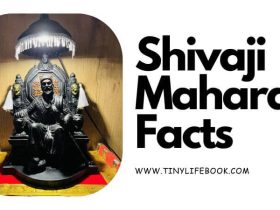Aga Khan Palace in Pune, India is an example of both architectural magnificence and historical relevance. Sultan Muhammad Shah Aga Khan III built the palace in 1892 with the original intention of giving the starving villagers in the neighborhood jobs. As important individuals including Mahatma Gandhi, his wife Kasturba Gandhi, and his secretary Mahadev Desai were interned there during the Quit India Movement, it eventually became intricately linked to India’s fight for freedom.
Who Built The Palace?
Sultan Muhammad Shah Aga Khan III constructed the Aga Khan Palace in Pune, India.
The spiritual leader of the Nizari Ismaili Muslims built the palace as a charitable gesture to employ the impoverished in Pune’s surrounding neighborhoods, which were severely affected by famine. One hundred thousand individuals worked on the construction, which lasted five years. About 1.2 million rupees was the price.
History, Architecture And Connection With Gandhi

Following a famine, it was constructed in 1892 to create jobs for the local population. Thus, the foundation of this castle lies in altruism and lofty ideals. At a cost of Rs 12,00,000, it was constructed over the course of 5 years with 1000 laborers.
Complete with pediments and turrets, the Aga Khan Palace is built in the Indo-Saracenic style.[2] The first and ground floors have respective areas of 1080 and 1756 m2, while the second level is 445 m² in size. This structure’s unique feature is the 2.5-meter corridor that runs the length of the building. A spectator’s attention is captured by the palace’s splendor and charming architecture.
From August 1942 until May 1944, Mahatma Gandhi was imprisoned at Aga Khan Palace in Pune. He shared this residence with his wife, Kasturba, and his secretaries, Sarojini Naidu and Mahadev Desai. Indeed, Mahadev Desai and Kasturba Gandhi both passed away on the grounds of this palace-turned-prison. The Samadhi for two of them is located in a corner of the palace grounds. Beside the two samadhis are some of Mahatma Gandhi’s ashes. Samadhis are merely Tulasi plants that have grown on top of the cremation sites for Kasturba and Mahadev Desai.
The Gandhi Museum

The Aga Khan Palace has been converted into a remarkable museum that highlights India’s liberation struggle. Visitors get the chance to learn more about this significant period of history through exhibits housed within its walls.
You will see personal items of Mahatma Gandhi as you explore the museum, including his famous spinning wheel, letters, and even his bed. This close-up look at his personal life gives visitors a more personal understanding of the man behind this iconic figure. Additionally, the palace grounds contain the tombs of both Kasturba Gandhi and Mahadev Desai, making it a priceless destination for anybody interested in Indian history and the life and deeds of Mahatma Gandhi.
Aga Khan Palace has a fascinating connection to Mahatma Gandhi, as evidenced by the fact that some of his ashes were interred within its grounds, solidifying its position in history amid all of its amazing stories. Five great halls are housed under its exquisite Italian arches, including the room where Mahatma Gandhi and Kasturba Gandhi stayed during their incarceration. It also serves as the headquarters for the Gandhi Memorial Society, which works to preserve Gandhi’s legacy for the coming generations. source
Events held at the palace
Gandhi Memorial Society hosts the following public events in Aga Khan Palace, as seen from the left rear side:
Martyr’s Day: 30 January.
Mahashivratri—Kasturbha Gandhi’s Death Day Celebrated As Mother’s Day.
Independence Day: 15 August.
Republic Day: 26 January.
Mahatma Gandhi’s Birth Anniversary: 2 October.
The samadhi has been hosting regular morning prayer sessions for decades, aside from annual festivities. Every day, the prayer attracts sizable numbers, and on October 2, when people come to honor Mahatma Gandhi, the number triples.
Aga Khan Palace Pune Timings
| Day | Timing |
|---|---|
| Monday | 9:00 am – 5:30 pm |
| Tuesday | 9:00 am – 5:30 pm |
| Wedesday | 9:00 am – 5:30 pm |
| Thursday | 9:00 am – 5:30 pm |
| Friday | 9:00 am – 5:30 pm |
| Saturday | 9:00 am – 5:30 pm |
| Sunday | 9:00 am – 5:30 pm |
Summary!
Have you ever been to this place before? What do you think about the rich history of the Aga Khan Palace? Make sure to share your opinions!
Also Read: 5 Exciting Reasons To Visit Raja Dinkar Kelkar Museum
Follow Us: Facebook | Instagram | Twitter | Pinterest













Leave a Reply